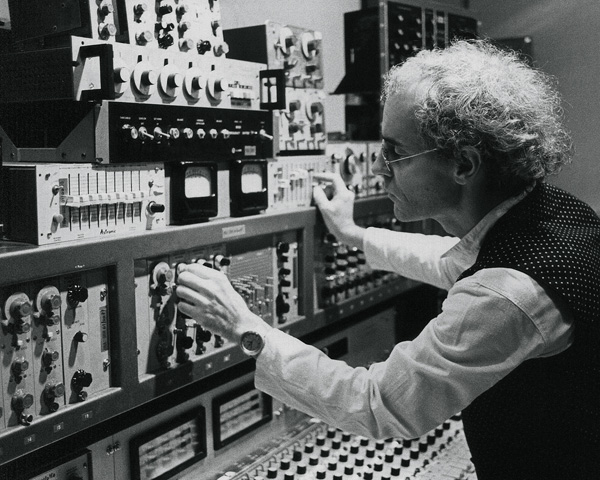François Bayle ~ Morceaux de ciels (1997), Dedicato a Karlheinz Stockhausen
Archivi tag: bayle
Grande Polyphonie
L’opera più rappresentativa di François Bayle (di cui abbiamo già parlato qui) messa in linea da Avant Garde Project. Ve la presentiamo qui in un’unica playlist della durata di circa 36′ (putroppo ci può essere un piccolo intervallo fra un brano e l’altro).
L’intera composizione può essere scaricata in formato flac da AGP sia in 16 che in 24 bit.
Lo schema del brano, tratto dalle note di programma, è il seguente:
- Appel…
- …aux lignes actives
The simplest concrete element, the line, thin and melodic arrives fastest at an abstraction of qualities. Active, passive, or intermediate, the true line is, according to Klee, the line subjected to a strong tension. - …aux notes repetées
Brief, equal, clear values scrabled by the patter of bells emitting call signals. Rigid, transposed, very tense repetition. Followed by a third, deep, abbreviated repetition. Transition, interrupted rubato. - …au jardin
A polyphony of space and colors. Contrast between very brief, delicate fragments–dry versus fluid – and ample quivering sheets having harmonic colors – static versus moving. - …figures doubles
Combination of symmetries. Two contrasting parts – like male and female – organized in series of paired cells. These are varied up to the eighth repetition, where the first element is then brought to a completion. The mirror-repeats are enriched with successive transformations through added harmonics.
Then a new, very dynamic element appears – a man’s mask bringing tidings… - …grande polyphonie
A brief moment in the guise of a preface prepares the final “rappell”. Seven interconnected sections [a me sembrano 5, nota mia; le sezioni sono 7 in tutto] – though it is not immediately clear how they are related. Various sound signals are heard at frequent intervals, making it manifest that the role of the previous polyphonies was to lead up to the final combination. This makes it possible to listen in a musical way with a great deal of freedom, independence, superposing different voices. All the sound spaces used here resemble each other, from the more artificial and abstract ones to the totally concrete ones, which range from bird calls and songs to human calls and songs.
And finally, the initial call signal dissolves in a long breath, - Rappell…
Spazi Inabitabili

François Bayle, francese, nato nel Madagascar, allievo e poi assistente di Schaeffer (dal 58 al 62) è uno dei principali esponenti della musica concreta di cui porta avanti la tradizione anche oggi. Ha diretto l’INA/GRM (Marseille) dal 1975 al 1997. Lasciata la direzione dell’INA, ha fondato un proprio studio chiamato Magison in cui lavora attualmente.
Fra i fondatori del movimento acusmatico (musica in cui scompaiono sia l’oggetto generatore del suono che l’interprete). Acusmatiche erano le lezioni di Pitagora, che i suoi discepoli ascoltavano celato da una tenda, senza vederlo restituendo “all’udito la totale responsabilità di una percezione che normalmente si appoggia ad altre testimonianze sensibili”, come scriveva Pierre Schaffer nel suo “Traité des objets musicaux”. L’acusmatica isola il suono dal contesto visivo e lo propone come fenomeno di per se stesso.
Here you can listen to the Espaces inhabitables, d’après Bataille et Jules Vernes (1967)
